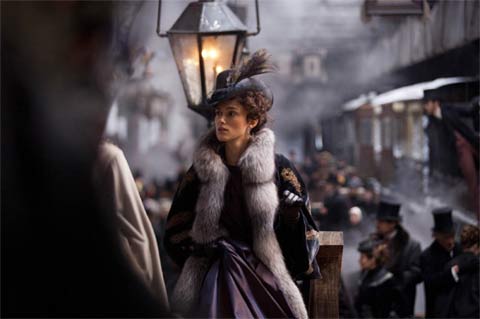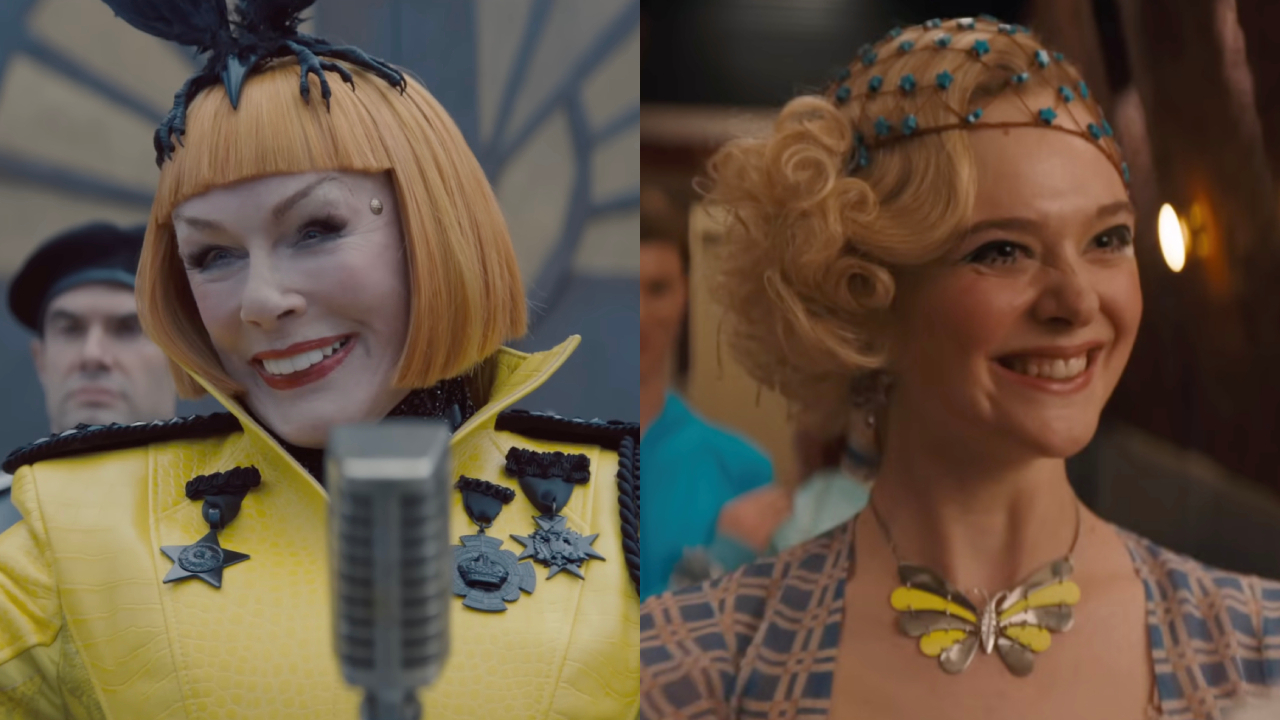Director Joe Wright On Regaining His Confidence To Make A Bold Anna Karenina

Just when you think you think Joe Wright is going to zig, he zags. The director who made an impressive debut with Pride & Prejudice went on to make the Oscar-nominated Atonement, which seemed to be establishing him as the 21st century's answer to Merchant-Ivory. Then he made the modern-day, not-very-good drama The Soloist, and followed it up with the terrific punky fairy tale Hanna, which swapped period frocks and sweeping scores for a little girl on the run and techno beats. That film then appeared to give Wright permission to team up with two of the muses from his earliest works: classic literature and Keira Knightley.
So now we have Anna Karenina, which might be the umpteenth adaptation of the Tolstoy classic but which stands very much on its own, partly because of Wright's bold decision to set most of the film inside a dilapidated theater, where bedrooms are tucked in among the rafters and horses can trot among the audience seats. It's a bold move made even bolder by the fact that Wright only decided to do it a few weeks before production began, facing budget constraints and a desire to make something truly ambitious. Teaming up with frequent collaborators like cinematographer Seamus McGarvey and costume designer Jacqueline Durran, he accomplished just that.
Speaking to Wright by phone last week, I asked about the confidence that seems to drive his work, the difference between the heightened reality of the theater in Anna Karenina and the occasional scenes that take place in the "real" world, and why he regrets ever comparing his work to Baz Luhrmann. Read it all below and please please please see the magnificent Anna Karenina in theaters this weekend.
You made the decision to set the entire movie within a dilapidated old theater with just a few weeks before the start of production. Was there just this crazy confidence on your part that it would work or were you driven by the fear that you couldn't do it?
I think excitement and fear are probably two sides of the same coin. I just have to practice some breathing techniques to get through it. I'd been wanting to make a film with this kind of stylized aesthetic for some time, and it was with this one i finally accepted that I had to get out of my system.
It seemed like making Hanna, which was so different from all of your other films, also helped you get some stuff out of your system and maybe emboldened you to make something even more ambitious like Anna Karenina.
Yeah, I did. I think I've been regaining confidence over the past few years. I had a confidence with Atonement, and then I made The Soloist and, although I loved making it and I'm very prod of that film and working with Downey and Jamie Foxx, the release of it was a fairly heartbreaking experience. I guess since then I've been trying to regain my confidence.
Your Daily Blend of Entertainment News

You said in another interview this could turn out to be the campiest movie made by a straight man who isn't Baz Luhrmann. Did you keep his films in mind as a kind of step too far from what you wanted to do?
I kind of regret saying that about Baz, because one tries not to compare oneself to other filmmakers. I didn't really keep him in my rearview mirror. The influences were closer to home, really. Films of Powell and Pressburger and my parents' puppet theater were both big influences on this movie, also the Czech animator Jan Svankmejer. The camp thing is interesting. I remember a lovely quote from Milan Kundera, who said the definition of camp is ripe to the edge of rotten. I felt that Russian society of that period was indeed ripe to the edge of rotten. It was just that tipping point at the last dance before the end of that civilization, or civilization as they knew it. So I think the film, the background of the story is inherently camp, if camp can be defined that way.
When you've got this heightened reality of the world within the old theater, and then also Levin's reality shot out in the actual world, how do you keep track of where reality actually is?
If I knew where the edges of reality, were, I would not need to make films, and I would live happily as a woodcarver with my wife and son. [Laughs] I'm constantly trying to define the edges of reality for myself, and they are constantly eluding me. In terms of the reality of this film, definitely, you're trying to give yourself parameters prior to the beginning of the shoot. The idea is that Anna's story, which is pure fiction, is set in this fictitious, artificial environment of the theater. And Levin's story, which is a more autobiographical portrait of Tolstoy, is expressed in what we think of as being realism, or cinematic reality. Of course there is no reality in cinema.
Long takes are often seen as getting films closer to reality, like in Italian neo-realist films, but you seem to use them to make a film even more heightened, with so much choreography as in this film.
Entirely. A long take requires even more choreography than, for instance, a close-up or something. A close-up you line the shot up and you basically follow the actor, you allow the actor to do what they're doing. Whereas the long Steadicam takes are very much choreographed pieces of theater.
Staff Writer at CinemaBlend

